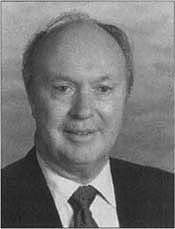All Issues
Reflections
Publication Information
California Agriculture 49(4):2-2.
Published July 01, 1995
PDF | Citation | Permissions
Full text
It has been my privilege to have served as the Vice President for Agriculture and Natural Resources for nearly nine years. Now, as I prepare to retire and assume new challenges, I am taking this opportunity to offer some personal reflections on the Division drawn from those years and my perceptions of the future.
The Division has undergone substantial change in the past nine years—organizational, programmatic, and in personnel. Three events, however, occupied major portions of my time during those years: reorganization of the Division in 1988; five successive years of reduction in state funding; and, during the past two years, realignment of the Agricultural Experiment Station (AES).
The reorganization of 1988 had two principal objectives: decentralization of management and operations of Cooperative Extension (CE) and the forging of closer administrative and programmatic linkages between CE specialists and their AES counterparts in campus departments. Both seemed “right” in 1988; both seem “right” today.
In 1988, CE was an organizational enigma in the larger University — centralized, top-down management structures in an otherwise largely decentralized Division and University. The reorganization delegated management responsibilities and authorities to the campuses and four regions. That decentralization was consistent with the University's principle of shared governance and the time-proven management axiom of delegating responsibility to those closest to program execution. Although results have been uneven, in part because of the high turnover of senior managers and difficulty in implementing effective program planning and coordination mechanisms, the principles are sound and will be beneficial long term.
The five-year decline in state funding beginning in 1990-91 caused major dislocations and distortions in the Division. Even prior to these reductions, the Division had not fared well within the University in obtaining supplemental funding for new program initiatives. When the reductions began in 1990-91, the Division was assessed a disproportionally larger cut by the University with the concurrence of the legislature. Strategies of the Division shifted from program development and growth in selected areas to program consolidation and downsizing. However, three successive early retirement programs, resulting in large and sudden losses of senior personnel, precluded systematic, priority-based program adjustments. Serious gaps were left in several programs in both the AES and CE due to the random nature of the retirements. On the positive side, the budget reductions forced some long overdue administrative adjustments and created a modest pool of discretionary resources for rebuilding programs.
Likewise, the proposal to realign the AES was in direct response to budget reductions and early retirement programs, which had disproportionally adverse effects in the core agricultural science programs on all three campuses. The realignment sought to consolidate plant pathology, entomology, soils and nutrition programs on the Davis and Riverside campuses through transfer of resources from Berkeley. Strongly opposed by the Berkeley campus from the beginning, the proposal has only recently been resolved by an agreement to transfer a much-reduced complement of resources, primarily vacant positions and associated support funds. The AES realignment has clearly illustrated the difficulties attending resource reallocation within the decentralized, semi-autonomous campus structure of the University of California.
Despite the turbulence of recent years, the Division today is a strong, vibrant organization with excellent, dedicated faculty and staff.
What of the future? The reality is likely to be a continued decline in public funding of traditional agricultural research and extension programs. That means we must consider further consolidation of programs and administrative functions; find more effective means of coordinating programs across a decentralized Division; develop a higher degree of research specialization among the campuses based on principles of comparative advantage; develop mechanisms to enhance flexibility in the allocation and use of scarce resources; explore new public/private funding mechanisms; provide faculty incentives for interdisciplinary research and extension programs; accelerate investments in distance learning and electronic means of communication to conserve resources and restructure Division organizations, particularly CE; and cast aside pedantic, archaic personnel systems which now differentiate research and extension functions. And we must simply stop doing some things which are of low priority in order to do more things of higher priority! The new vice president will not be lacking in challenges and opportunities! I wish him well.
The Division is a great educational asset to the University and the people of California. I have every confidence that it will adapt successfully to the changing environment of the 21st century. I wish you well in what is certain to be a challenging and rewarding future chapter of a great organization in a great university.





